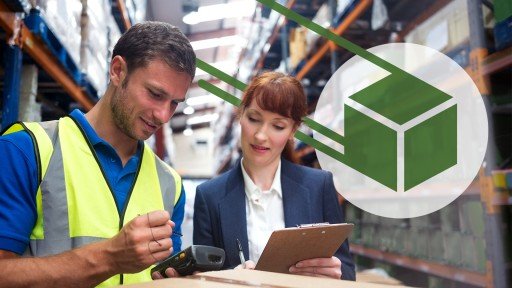Key takeaways
Businesses can successfully lower transportation costs in the reverse logistics process by utilizing strong transportation management systems and utilizing technology to improve transportation routes. Businesses may increase fuel efficiency, streamline transportation operations, and improve supply chain efficiency with real-time visibility and tracking capabilities. Examining environmentally friendly and cost-effective transportation choices, such as multimodal and alternative fuels, can help preserve the environment. Ultimately, by providing invaluable industry knowledge, experience, and access to a greater choice of transportation options, working with third-party logistics providers can help firms lower overall costs and improve their reverse logistics operations. Recognizing the effects of transportation expenses and putting strategy-based solutions into action.

Introduction
To maximize operations in the fast-paced business world of today, it is essential to comprehend how transportation costs affect reverse logistics. Excessive transportation costs can seriously affect a company’s profitability, so it is critical that they investigate and create cost-saving measures. By putting in place effective transportation management systems, businesses can cut down on pointless processes, make the most use of their cars, and streamline their routes. Saving money and promoting environmental sustainability can be achieved by utilizing technology for route optimization and researching environmentally friendly transportation choices including multimodal transportation and alternative fuels. Working together with third-party logistics companies is a great way to take advantage of their business knowledge and wider network of transportation resources. Businesses can increase productivity and cut costs associated with reverse logistics transportation by implementing a comprehensive plan. cut costs, and profitability in their supply chain operations.
Understanding the impact of transportation costs in reverse logistics
The cost of transportation is one of the key components of reverse logistics. Companies must recognize the significance of these costs if they hope to optimize their reverse logistics operations. Spending too much on transportation could reduce sales and render the company completely unprofitable. Businesses can find areas for expansion and put cost-cutting measures in place by examining the impact of transportation expenses.
The financial strain that reverse logistics transportation charges inflict on companies is one of their principal effects. It may be very expensive to return goods to their original location, particularly if a lot of returns need to be handled. These expenses cover fuel, package materials, driver remuneration, upkeep of the vehicle, and repairs. Additionally, the cost of transportation may rise. due to factors like route complexity and distance and the need for specialized handling or equipment.
Reverse logistics-related transportation expenses have an impact on the overall effectiveness of the supply chain. Extended lead times for product returns due to high transportation costs might cause delays in processing and replenishing returned products. Carrying expenses can go up as a result, and dissatisfied consumers and inventory shortages might occur. To improve the efficiency of their supply chains generally and to optimize their reverse logistics procedures, businesses need to pay closer attention to the effects of transportation expenses.
Implementing efficient transportation management systems
By using effective transportation management solutions, reverse logistics companies can lower their transportation costs. By using these technologies, firms may optimize vehicle utilization, cut down on inefficient procedures, and enhance their transportation routes. Businesses may make better decisions about the planning and execution of transportation by utilizing technology and data.
Using cutting-edge software to automate and enhance transportation processes is a crucial component of effective transportation management systems. These technologies give companies real-time visibility into transportation operations so they can manage shipments, keep an eye on vehicle performance, and pinpoint areas that need improvement. By streamlining their routes and minimizing the amount of wasted kilometers, businesses may lower their fuel usage and total transportation expenses. These tools can also assist companies in finding chances for mode shifting and consolidation, which would result in even lower transportation costs.
Businesses can enhance their customer service in reverse logistics by putting effective transportation management techniques into practice. Businesses may give clients accurate and timely information about the status of their returns by employing real-time visibility and tracking technologies. As a result, customers feel more confident and faith-filled, which increases customer happiness and loyalty.
Leveraging technology to optimize transportation routes
Reverse logistics relies heavily on technology to optimize transit routes and cut costs. Businesses can identify the best routes for product returns by using cutting-edge technology and route optimization tools. This lowers transportation expenses, expedites delivery, and boosts overall business effectiveness.
Real-time traffic data and GPS monitoring can be used to optimize transit routes. Businesses can monitor and evaluate traffic patterns, road conditions, and other elements that may affect the effectiveness of transportation by using this technology. Businesses can save travel times and avoid crowded locations by considering these criteria and making real-time route adjustments.
Software for route optimization is another bit of technology that can be applied. These computer programs employ algorithms to determine the best routes depending on a number of variables, including distance, vehicle capacity, and fuel efficiency. Companies that offer specific requirements and constraints can design the most efficient routes that save on transportation costs.
Technology can be used in reverse logistics to improve truck utilization and route optimization. Businesses can track and keep an eye on the performance of their transport trucks thanks to telematics devices and fleet management systems. This makes it easier to find ways to increase vehicle usage, decrease idle time, and optimize resource consumption.
Exploring sustainable transportation options
In addition to reducing transportation expenses, businesses can look into ecologically sustainable options for reverse logistics. Long-term financial savings are another benefit of sustainable transportation, in addition to less environmental harm.
Among the ways to travel sustainably is to use alternative fuels. Businesses should consider using electric or hybrid vehicles to deliver returned merchandise. These vehicles consume less energy and produce less pollution in comparison to traditional gasoline or diesel-powered vehicles. By using alternative fuel sources, businesses can reduce their fuel costs and contribute to the development of a more ecologically friendly and sustainable supply chain.
Another sustainable transportation option is to use multimodal transportation. This involves combining various modes of transportation, such road, rail, and water, in order to deliver products. Intermodal transportation can help reduce transportation costs by optimizing routes and leveraging the benefits of each mode of transportation. It also lowers carbon emissions and the overall environmental impact of transportation.
Additionally, businesses ought to investigate opportunities for shared transportation and partnership through reverse logistics. By working with other businesses or utilizing shared transportation networks, businesses can leverage economies of scale to reduce their transportation costs. This tactic not only lowers expenses but also promotes sustainability and resource sharing.
Collaborating with third-party logistics providers for cost-effective solutions
Collaborating with third-party logistics (3PL) firms in reverse logistics can be a cost-effective approach to save shipping expenses. By collaborating with 3PL providers—logistics and transportation service experts—businesses may streamline their reverse logistics processes and reduce expenses.
There are benefits to working with 3PL providers due to their market knowledge and experience. Due to their extensive experience in managing transportation operations, these service providers are able to offer sage counsel and best practices. They can help businesses identify opportunities for growth, streamline transportation networks, and implement cost-cutting measures.
Working together with 3PL suppliers can also provide access to a wider network of transportation resources. These suppliers usually have working relationships with warehouses, carriers, and other logistics partners, so businesses may take advantage of their network and bargain for lower transportation costs. Businesses may see large cost savings as a result of this.
Value-added services like inventory management, warehousing, and expertise in reverse logistics can also be offered by 3PL suppliers. By focusing on their core competencies and outsourcing these services to a dependable partner, businesses can reduce the complexity and costs associated with handling transportation operations in reverse logistics.
Conclusions
In conclusion, it is evident that transportation expenses have a major impact on the efficiency and financial viability of reverse logistics operations. Businesses can improve supply chain efficiency by streamlining inefficient processes and optimizing routes by understanding the impact of transportation expenses and implementing efficient transportation management techniques. By looking into environmentally friendly transportation solutions and using technology to enhance transit routes, businesses can further save costs and their impact on the environment. Working with third-party logistics providers can also provide cost-effective solutions and priceless industry experience to streamline transportation operations. By using a thorough approach to managing transportation expenses in reverse logistics, businesses may enhance efficiency, reduce expenses, and boost profitability in their supply chain activities.

FAQ
How can logistics reduce transportation costs?
There are several ways that logistics can reduce the cost of transportation. Two effective strategies are to increase vehicle use and simplify transportation routes. By using technology and data, logistics can determine the most economical routes for product returns, reducing fuel consumption and overall transportation costs. By utilizing real-time traffic data and route optimization tools, businesses may make educated decisions about the planning and execution of their transportation operations.
Logistics may also reduce transportation costs by looking into eco-friendly transportation options. Part of this involves using alternative fuels, such electric or hybrid vehicles, which are more energy- and environmentally-efficient. Businesses can also consider multimodal transportation, which integrates many modes of transportation, to save costs and carbon emissions. By using sustainable transportation methods, logistics can save money in the long run and contribute to a supply chain that is more sustainable and good to the environment.
Collaborating with third-party logistics firms is an additional cost-effective strategy to reduce transportation expenses. Apart from providing value-added services such as experience in reverse logistics, 3PL suppliers can leverage a wider range of transportation resources and industry knowledge. Logistics may reduce costs associated with managing transportation operations by optimizing workflows, securing favorable shipping terms, and focusing on core competencies via collaborations with third-party logistics (3PL) providers.
In conclusion, logistics may effectively reduce transportation costs by looking at environmentally friendly transportation options, collaborating with outside vendors, and optimizing routes. By implementing these strategies, businesses can improve supply chain operations’ productivity, reduce expenses, and increase profitability.
How can reverse logistics reduce costs?
Reverse logistics may reduce costs in a number of ways. Installing efficient transportation management systems is one way to save wasteful spending, maximize vehicle usage, and improve routes. By using technology and data, businesses may identify the most cost-effective transportation choices for handling returns, which ultimately reduces overall transportation spending.
Analyzing environmentally friendly transportation options is another way to save costs in reverse logistics. By utilizing alternative fuels, such as electric or hybrid vehicles, businesses can lower their fuel expenses and their environmental impact. Intermodal transportation can also assist in reducing costs and streamlining operations by efficiently utilizing a variety of modes of transportation.
Working with outside logistics providers is also essential to reducing the cost of reverse logistics. Working with 3PL providers gives businesses access to a wider network of transportation resources, industry experience, and value-added services that can enhance operations and save expenses. Reduced expenses, more successful reverse logistics operations, and improved transportation protocols could all come from this collaboration.
In summary, there exist several viable approaches to reduce expenses in reverse logistics, such as implementing efficient transportation management systems, exploring eco-friendly shipping options, and collaborating with external logistics firms. By using these strategies, businesses can improve supply chain operations’ profitability, cut expenses, and increase productivity.
How can reverse logistics reduce costs?
Problems with reverse logistics require initiative and preparation to address. One way to get around these problems is to implement effective collaboration and communication between all stakeholders engaged in the reverse logistics process. By building strong relationships with suppliers, customers, and partners, businesses may guarantee a smooth return product process, streamline operations, and quickly resolve problems.
Investing in data analytics and technology is another essential strategy for knowing and seeing reverse logistics processes. By using advanced data tracking tools and analytics software, businesses can identify bottlenecks and inefficiencies in the reverse logistics process as well as places for improvement. Using this data-driven approach, businesses may increase overall productivity, optimize operations, and make wise decisions.
Problems with reverse logistics must also be solved by ongoing innovation and adaptation to changing market trends and customer demands. By being flexible and adaptive, businesses can modify their policies, practices, and technological infrastructure to better meet the shifting needs and preferences of their customers. By embracing innovation and new technologies, businesses may stay ahead of the curve and effectively handle challenges in reverse logistics.
In summary, overcoming reverse logistics obstacles calls for a diversified strategy that incorporates technology adoption, efficient communication, and a dedication to ongoing development. Businesses can successfully manage their supply chain, streamline operations, and negotiate the challenges of reverse logistics by putting these concepts into practice.
What handling costs are included in reverse logistics?
The whole cost of managing returned products is included in the handling expenses of reverse logistics. Labor for processing returns, materials for repackaging product packaging, shipping charges for returned goods, and storage fees for holding returned goods in warehouses are a few examples of these expenditures. Expenses for recycling or dumping damaged or unsaleable goods may also apply, as well as costs for returning items for inspection, testing, and refurbishment. By keeping an eye on and reducing these handling costs, businesses can effectively reduce the overall costs of their reverse logistics operations and boost profitability.
Hope this article was helpful for more check out our previous blog post by clicking here

